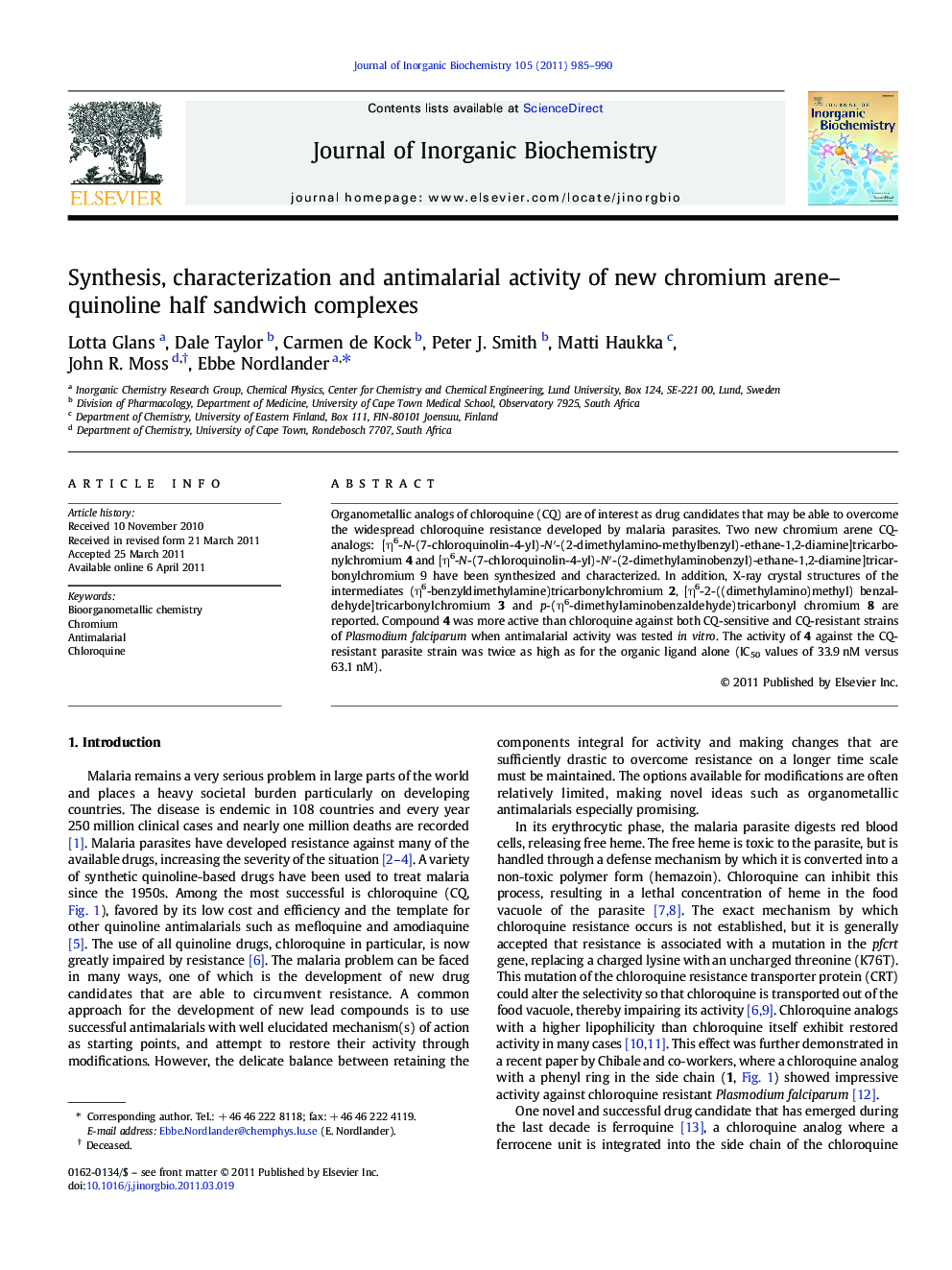| Article ID | Journal | Published Year | Pages | File Type |
|---|---|---|---|---|
| 1316185 | Journal of Inorganic Biochemistry | 2011 | 6 Pages |
Organometallic analogs of chloroquine (CQ) are of interest as drug candidates that may be able to overcome the widespread chloroquine resistance developed by malaria parasites. Two new chromium arene CQ-analogs: [η6-N-(7-chloroquinolin-4-yl)-N′-(2-dimethylamino-methylbenzyl)-ethane-1,2-diamine]tricarbonylchromium 4 and [η6-N-(7-chloroquinolin-4-yl)-N′-(2-dimethylaminobenzyl)-ethane-1,2-diamine]tricarbonylchromium 9 have been synthesized and characterized. In addition, X-ray crystal structures of the intermediates (η6-benzyldimethylamine)tricarbonylchromium 2, [η6-2-((dimethylamino)methyl) benzaldehyde]tricarbonylchromium 3 and p-(η6-dimethylaminobenzaldehyde)tricarbonyl chromium 8 are reported. Compound 4 was more active than chloroquine against both CQ-sensitive and CQ-resistant strains of Plasmodium falciparum when antimalarial activity was tested in vitro. The activity of 4 against the CQ-resistant parasite strain was twice as high as for the organic ligand alone (IC50 values of 33.9 nM versus 63.1 nM).
Graphical abstractTwo chromium half sandwich chloroquine analogs have been synthesized and fully characterized. One of them showed high antimalarial activity against both chloroquine sensitive and chloroquine resistant Plasmodium falciparum parasite strains. The activity is compared to the activity of chloroquine and the purely organic ligand.Figure optionsDownload full-size imageDownload as PowerPoint slide
